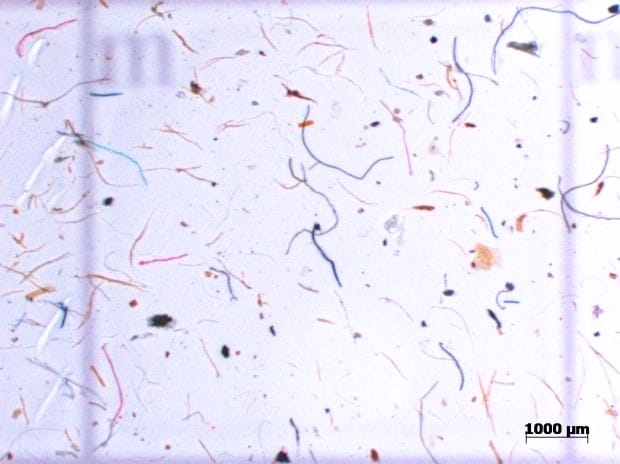Microplastics, tiny plastic particles less than 5 millimeters in size, have quietly become one of the most significant environmental challenges of our time. They are created from the breakdown of larger plastics, synthetic fibers from clothing, and microbeads used in various products. As these small particles infiltrate the environment, they bring with them a host of environmental and health risks that demand urgent attention.

The Environmental Crisis : microplastics
Microplastics are now found in almost every corner of the Earth, from the deep ocean to the highest mountain peaks. These particles pollute ecosystems and accumulate in the water, air, and soil. In marine environments, microplastics have a devastating impact. They are ingested by aquatic organisms, causing physical harm and exposing animals to toxic chemicals that attach to the plastic particles.
As these particles move through the food chain, larger marine animals are also affected. Ultimately, microplastics return to humans, particularly through seafood. This endless cycle of pollution threatens the balance of ecosystems and the health of all living beings.
Microplastics and Human Health : microplastics
One of the most alarming revelations about microplastics is their presence in the human body. Scientists have discovered microplastics in human blood, brain tissue, and even placentas. These findings highlight how deeply embedded microplastics have become in our daily lives.
The implications of microplastics in the human body are not yet fully understood. However, studies suggest potential risks, including inflammation, damage to cells, and interference with normal biological functions. Some particles are small enough to cross biological barriers, potentially affecting organs like the brain. The long-term effects remain uncertain, but the potential links to health conditions such as strokes, respiratory issues, and reproductive disorders are deeply concerning.
Food, Water, and Air Contamination : microplastics
Microplastics have made their way into our food, water, and air. Seafood is one of the most significant sources of human exposure, as marine animals ingest microplastics. Other foods, such as salt and even fruits and vegetables, have shown traces of microplastic contamination.
Water, both bottled and tap, is also a major source. Microplastics are now found in nearly all water supplies. Similarly, air pollution carries tiny plastic particles that can be inhaled, further increasing human exposure. This widespread contamination has created an invisible but omnipresent health hazard.
The Origins of Microplastics
Microplastics originate from two primary sources. The first, known as primary microplastics, are intentionally created small particles, such as those used in cosmetic products and industrial applications. The second type, secondary microplastics, forms when larger plastic items, like bottles and bags, break down due to sunlight, wind, or waves.
One significant contributor to microplastic pollution is synthetic clothing. Washing synthetic garments releases tiny plastic fibers that wastewater treatment plants often fail to filter out, allowing them to enter rivers and oceans. This makes clothing a surprising yet significant source of microplastic pollution.
Tackling the Microplastic Challenge
The fight against microplastic pollution requires a multi-layered approach:
- Reduce Plastic Usage: Minimizing the production and use of single-use plastics is critical. Shifting to sustainable alternatives can significantly decrease the flow of microplastics into the environment.
- Improve Waste Management: Strengthening recycling systems and waste disposal practices can prevent plastics from breaking down into microplastics.
- Innovative Solutions: Developing new technologies, such as filters for washing machines, can help reduce microplastic release from everyday activities.
- Legislation: Governments must enforce stricter regulations on plastic production and use to control pollution at its source.
- Public Awareness: Educating individuals about the dangers of microplastics and promoting sustainable behaviors are essential steps in combating this issue.
The Path Forward : microplastics
Microplastics are a silent but pervasive threat to the environment and human health. They serve as a stark reminder of the consequences of our reliance on plastics. Tackling this challenge requires collective action from individuals, industries, and governments alike.
By reducing plastic consumption, adopting sustainable practices, and pushing for innovative solutions, we can begin to address the microplastic crisis and protect the planet for future generations. The time to act is now, as the consequences of inaction may only grow more severe with time.
Read : Six Planetary Alignments 2025 : The Science Behind the Spectacle




Thank you for your sharing. I am worried that I lack creative ideas. It is your article that makes me full of hope. Thank you. But, I have a question, can you help me?
Your point of view caught my eye and was very interesting. Thanks. I have a question for you. https://accounts.binance.com/hu/register?ref=FIHEGIZ8
Your point of view caught my eye and was very interesting. Thanks. I have a question for you.
Can you be more specific about the content of your article? After reading it, I still have some doubts. Hope you can help me.
Your point of view caught my eye and was very interesting. Thanks. I have a question for you.
Hey There. I found your weblog the use of msn. This is a really neatly written article. I will make sure to bookmark it and return to read more of your helpful info. Thanks for the post. I’ll definitely return.
Your article helped me a lot, is there any more related content? Thanks!
Thank you for your sharing. I am worried that I lack creative ideas. It is your article that makes me full of hope. Thank you. But, I have a question, can you help me?